On Monday, 9 August 2024, the 630 kVA generator from an anonymous donor arrived in Kramatorsk, where it supplies the district heating centre of the Lazurnyj microrayon with electricity when the grid fails. The land is flat and everything has to be pumped: Fresh water, waste water, heating water. In addition, it is not enough to have heating oil. The burners are electrically operated and controlled. If the power fails, it not only gets cold, but the pipes freeze if the water cannot flow continuously. As a result, the pipes burst.
Pro Ukraïna has done everything it can to ensure that this generator arrives in Ukraine. The town of Kramatorsk is only 25 kilometres from the front line and suffers repeatedly from Russian shelling. Nevertheless, the people there do not give up and refuse to be defeated. There are still 13,600 people living in this neighbourhood.
Here's the story.
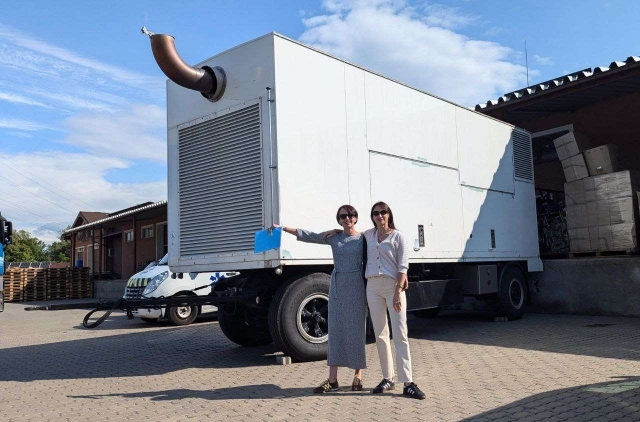
One day in spring 2024, Pro Ukraina was contacted via the contact form on the website and in parallel by telephone: the call was about an older but well-maintained, very large generator that had practically always been on standby for disaster relief and had very few operating hours "on the clock".
That sounded very interesting, of course!
The man at the other end of the line also stated that the generator was to be scrapped because it no longer complied with the Swiss Clean Air Ordinance. Retrofitting a machine of this vintage was not worthwhile for the owner, a cantonal institution. A replacement had been ordered.
Beg your pardon ?!?
What's more, the engineer in charge felt that it would hurt his heart to simply scrap this outstanding machine, which is why he had tried in vain to have it shipped to Ukraine via government agencies. Could we perhaps do that? The machine would be given away free of charge.
From then on, it was really difficult to keep the enthusiasm in check: That goes without saying!!! Erh, certainly and with great pleasure 🙂
An appointment was made immediately to inspect the machine on site and discuss the details. Immediately, i.e. within the next 24 hours.
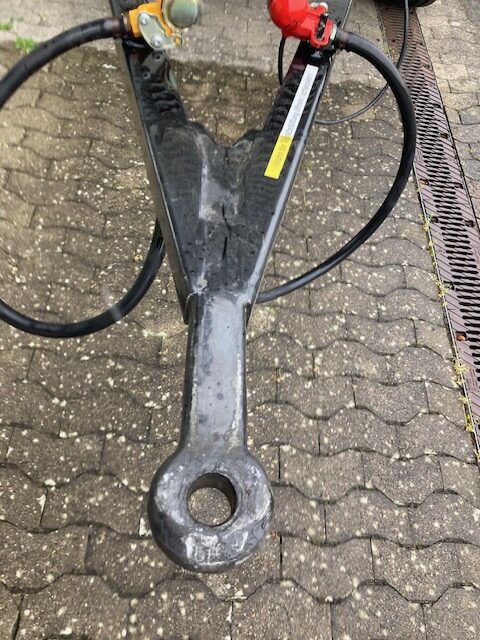
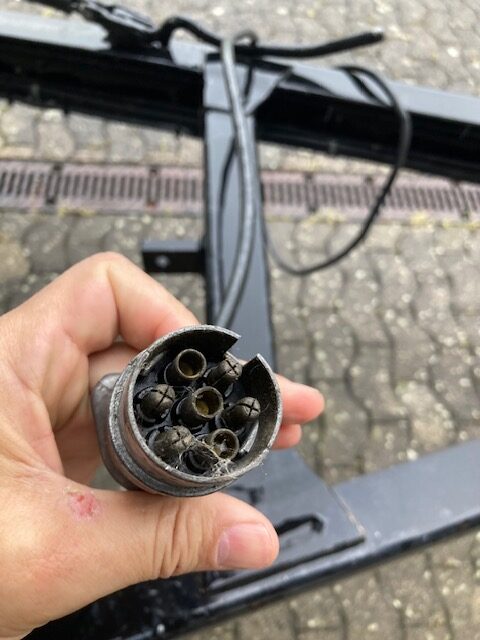
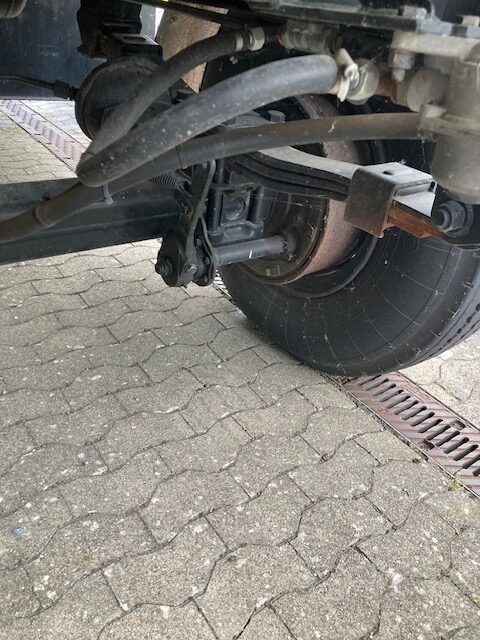
No sooner said than done: the following day at 09:00 a.m., the tour took place and it was straight down to business.
- What size is the drawbar, how are the plugs in the Ukraine, what kind of brake lines do they have?
- What licence plate does the generator need for the transfer, how does it work with customs and the export permit for goods that can be used for civil and military purposes?
It became clear that the brakes should be converted to EU standard anyway, as there had already been compatibility problems within Switzerland. It was agreed that the owner would take care of this. Pro Ukraïna would take care of everything else.
Several test runs were carried out because the owner wanted to make sure that the Ukrainians would not have any disappointing surprises after the expensive transport.
Enquiries with the road traffic office and the police immediately clarified the situation.
It is not possible to drive to Ukraine with the blue number plate for working vehicles that are not transporting goods. The vehicle must be de-registered and an export number plate issued. Pro Ukraïna thus formally became the owner of an 18-tonne generator with an output of 630 kVA.
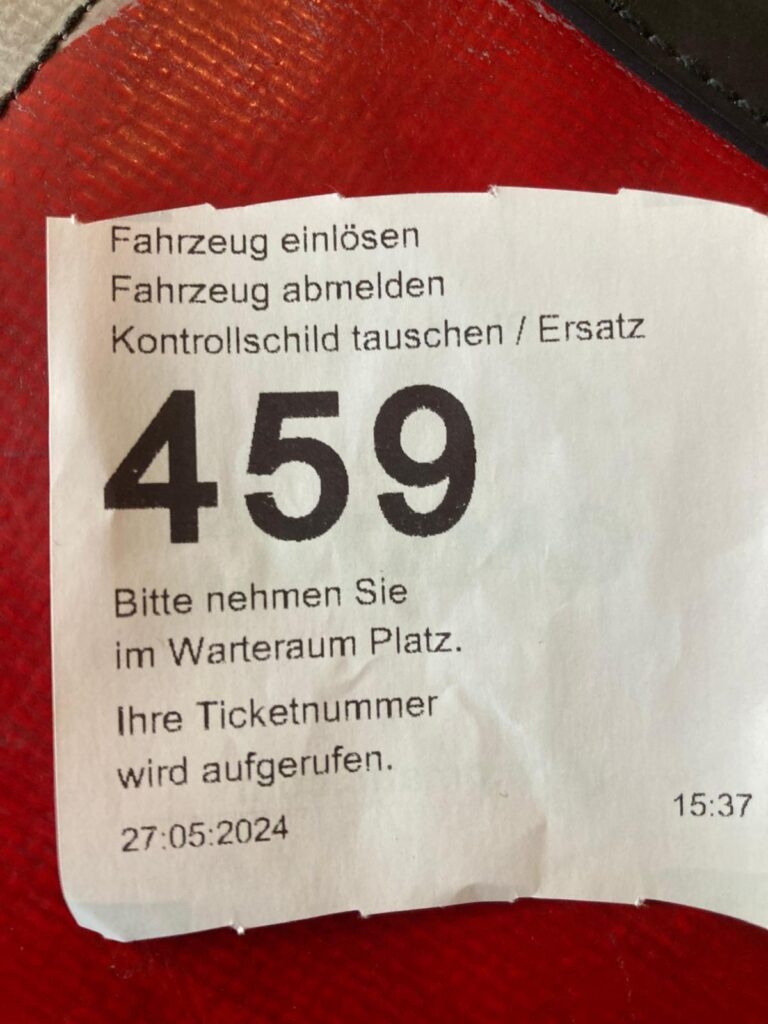


SECO had no objections to the export. The only thing left to do was to find a towing vehicle. This proved to be more difficult than expected, as none of the Ukrainian hauliers we had worked with so far had vehicles with the right towing equipment.
There was also the matter of the insurance. In the end, a Swiss haulier had to be commissioned, as otherwise the Swiss-registered trailer would not have been insured. Finding a company that was prepared to drive to the Ukraine was also not easy. Most of them only drive as far as the border, which makes a T1 transit more difficult. More on this later.
Finally, we found a transporter who pointed out an important additional aspect: in order to be able to tow 18 tonnes, the rear axle of the towing vehicle must be loaded with several tonnes.
So it was a good thing that the Zurich North Cantonal School offered us all the canteen furniture because their school building is being renovated - a total of four tonnes of chairs and high-quality foldable tables.

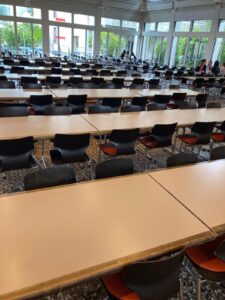
In addition, several cubic metres of relief supplies had once again accumulated in our storage container. These included medical supplies, electric wheelchairs, walking frames and inventory from two restaurants in Central Switzerland and the Emmental, which were given up. In total, another 1.5 tonnes for the rear axle of the lorry.
All of the kitchen materials and crockery will be used for the new buildings in Vilshany and Tyachiv, where groups of people with disabilities will live in accordance with modern standards.



Finally, everything was ready for transport. In pouring rain, all the canteen furniture was first loaded at the Zurich North Cantonal School.
We then travelled to Winterthur to empty the container. Finally, we drove to the storage area where the generator was parked. The licence plate lighting had to be quickly modified, as the export number is much wider than the blue plate. The driver said that one light would be enough - the legally required lighting was there and that was that. So we quickly removed the left-hand light and mounted the export number off-centre. 🙂
The border crossing went smoothly, although the German customs officers were curious about and really wanted to see the generator.






The journey to Uzhhorod went smoothly. Pro Ukraïna was in constant contact with the driver until the end. From Budapest onwards, a handover took place, with CAMZ taking responsibility for the progress.
After an uneventful journey, the problems started at the Hungarian-Ukrainian border. The Hungarian customs officials took out their measuring tape and realised that the entire road train exceeded the permitted length by 10 cm. The cause was a sheet metal cover that had been retrofitted to protect the sockets at the rear.
As the driver flatly refused to pay for a ‘special permit’ afterwards, the clearance then simply took four hours. The freight train had to be weighed, where a discrepancy of 65 kg was found between the declared and actual weight - with a load of 23.5 tonnes. Everything, including the lorry and generator, then had to go through the scanner. Trust is good - verification is better!
Last but not least, a fine had to be paid. Pro Ukraïna would have paid it, of course. It turned out that it was only 35 euros, so the transport company was kind enough to pay it.
With the Ukrainians, everything went very quickly. The Ukrainian officials practically just waved the huge generator through after a brief administrative clearance.
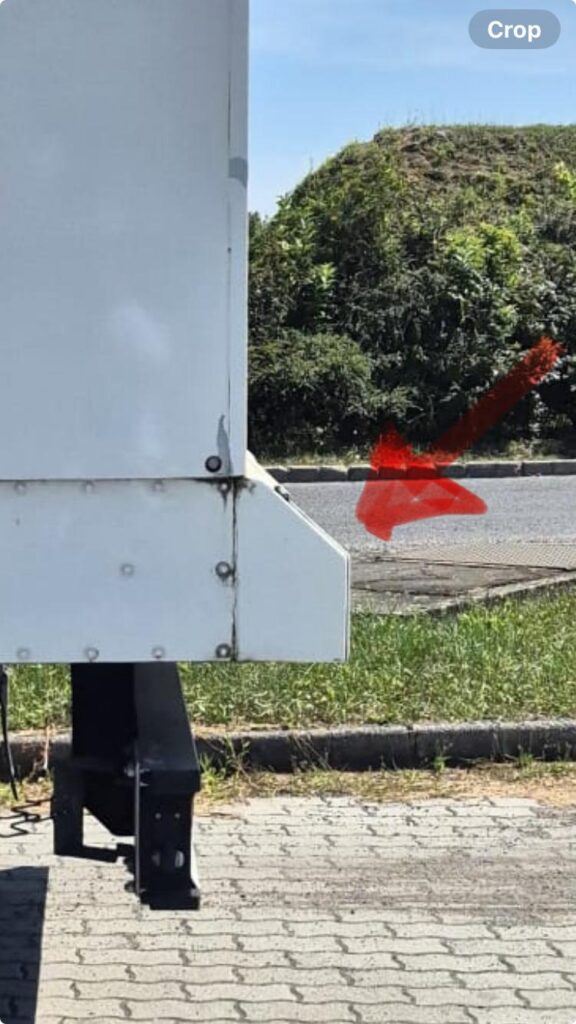
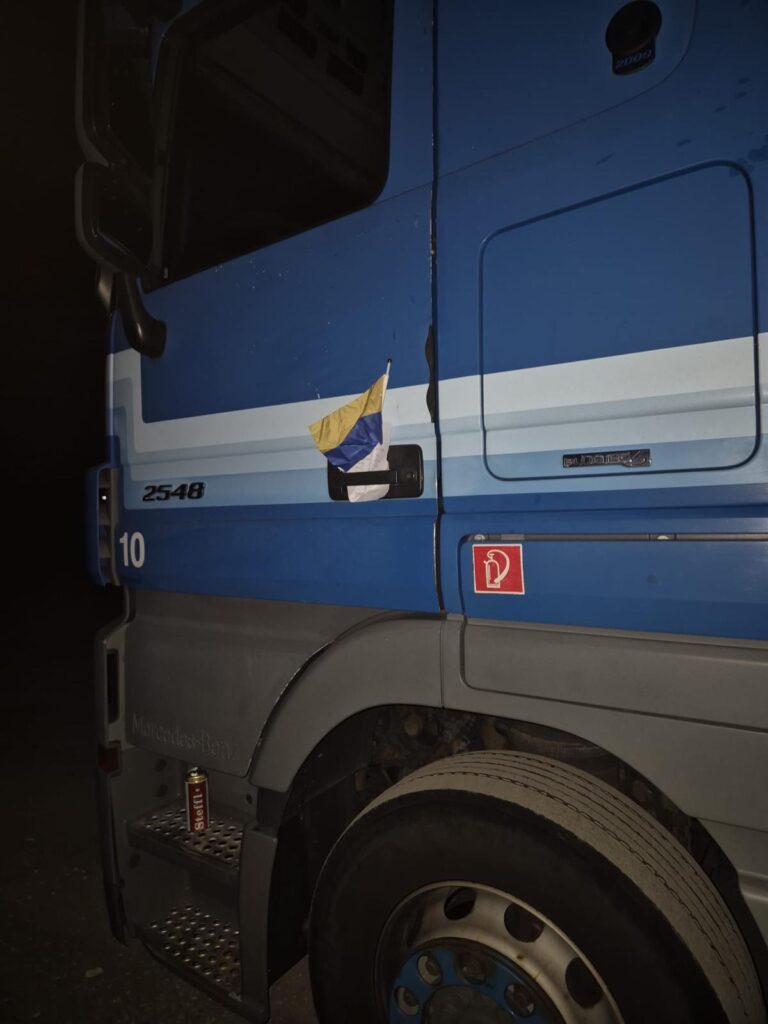
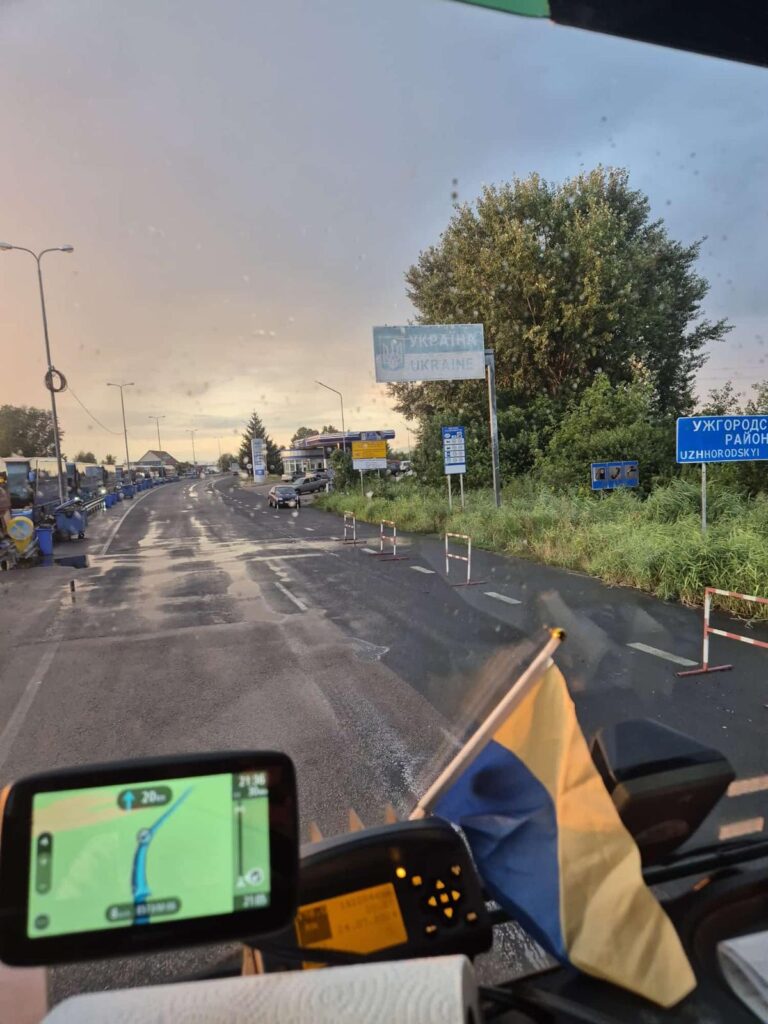
The driver left the lorry briefly after the border crossing to get a Ukrainian SIM card. When he returned, he found a Ukrainian flag together with a touching letter in the door handle.

The driver decided not to stay in a hotel room and spent the night in the vehicle. The next morning, he arrived at the warehouse in Uzhhorod, where he was warmly welcomed.
Unloading began immediately.
I'll tell you what happened to the furniture in another article.
And you'll soon find out how the generator got from Uzhhorod to Kramatorsk when the story continues.
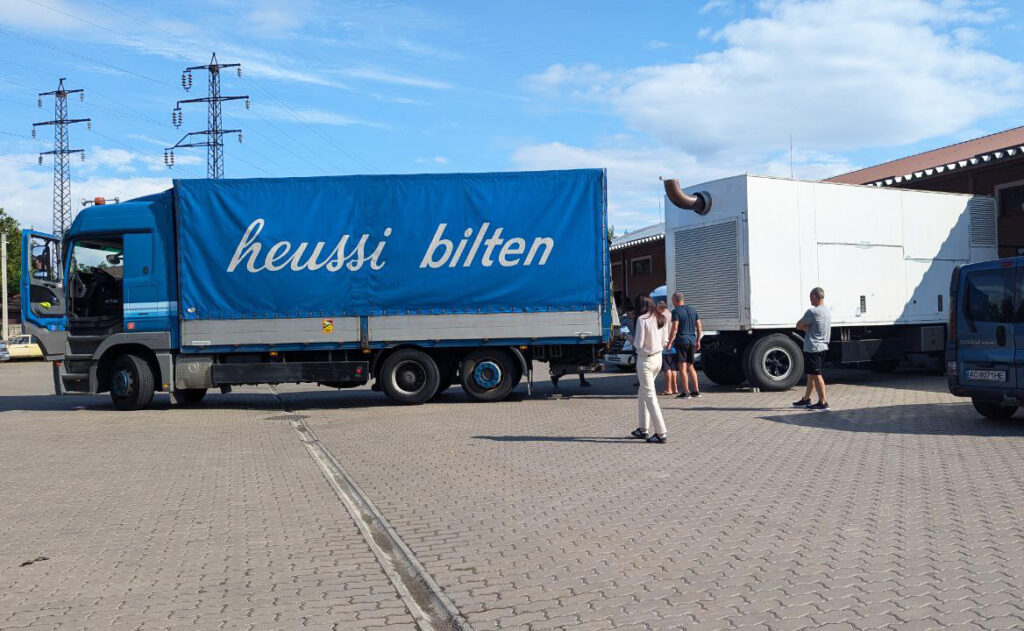


To continue….work in progress 🙂

